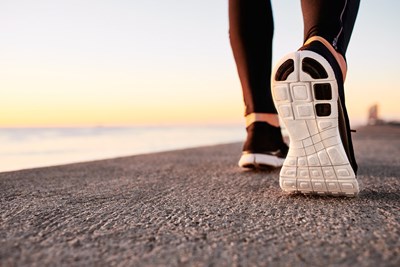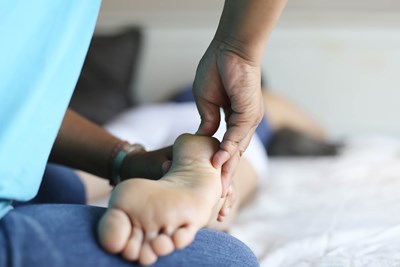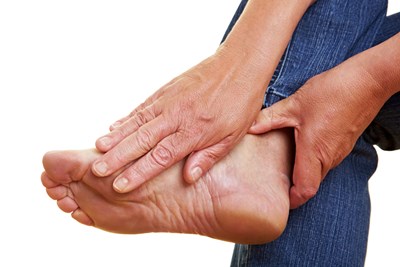Our feet are an often underrated body part that are vital to our survival. We depend on them to work, exercise, dance, move, and walk (which is a requirement of almost every activity from cooking to shopping). Feet are made up of more than 150 different muscles, tendons, ligaments, joints, and bones, of which the heel bone is the largest. So when it starts to hurt, it’s definitely something to take note of.
Diagnosing Heel Pain
Heel pain can be caused by a wide variety of internal and external wounds, strains, rips, tears, and irritations. What may start out as a very minor injury can become very serious and chronic when it’s left untended. In most cases, being extra gentle with your feet and taking a few days of rest can be extremely effective. But if the pain isn’t getting better or gets worse, it might be time to head to a general physician or podiatrist (foot doctor). Make note of any specific symptoms you’ve noticed, how long it’s been going on, and exactly where the pain is occurring, which will make it easier for your doctor to identify the cause of your discomfort. They will perform a physical exam; you may have to stand in various positions or move in particular ways so the physician can get an idea of what’s going on inside. In some cases an x-ray will be necessary.
Types of Heel Pain
Heel pain basically breaks down into two types: beneath and behind. When the pain occurs beneath the heel, on the bottom side of the foot, it’s usually the tissues there that are having the trouble. According to the American Orthopaedic Foot and Ankle Society (AOFAS), common injuries beneath the heel issues include:
- Stone Bruise: The fat pad on the bottom of the heel literally gets bruised, usually from stepping on something small and hard, like a stone. You cannot always see the bruising, and like most bruises, it will get better over time.
- Plantar Fasciitis: The fascia (stretch of tissue from heel to toe) in the heel area on the bottom of the foot can become inflamed, generally from overexertion through running or jumping. The pain is often mild to start with but tends to begin hurting almost immediately upon getting out of bed.
- Bone Spur: This one is a little more confusing. It occurs when plantar fasciitis goes on for too long without treatment or rest. Tears occur where the ligament and heel bone connect, producing a little bit of bleeding and a spur on the bottom of the bone. It isn’t the spur itself that causes the pain, as some people may have one and not even notice, but rather, the ligament tearing each time it pulls and strains as the foot moves.
When the pain occurs behind the ankle, the AOFAS states the following may be likely culprits:
- Retrocalcaneal Bursitis or Achilles Tendinitis: The Achilles tendon runs down the back of the ankle. Too much walking or running can, over the course of time, stretch and strain this tendon. The resulting inflammation can be painful and lead to bone spurs. Ill fitting shoes can also cause such pain, as the top of the back may wear on the area.
- Excessive Pronation: Pronation is, essentially, the movement of the foot as it hits the ground, the bones moving down and in. When you step, if there is too much inward motion (pronation), the heel’s tissues may be overstretched. This can lead to trouble in joints all the way up the leg and into the lower back.
Treatment of Heel Pain
For mild pain, a few days of taking it easy may be sufficient. Taking an over-the-counter nonsteroidal anti-inflammatory (like ibuprofen) can help reduce pain and swelling. Alternating a heating pad and cold pack in half hour increments can also provide some relief.
In more severe cases, your doctor may recommend specific exercises or physical therapy. Additionally, it may be necessary to wear a specific sort of shoe (sometimes even a “prescription” shoe), strap or bind the foot to support muscles and tendons, or wear particular inserts. Orthotic devices can help by providing additional support for the foot and correcting imbalances and excessive pronation. In the most extreme cases for specific issues (such as bone spurs) surgery may be necessary.




